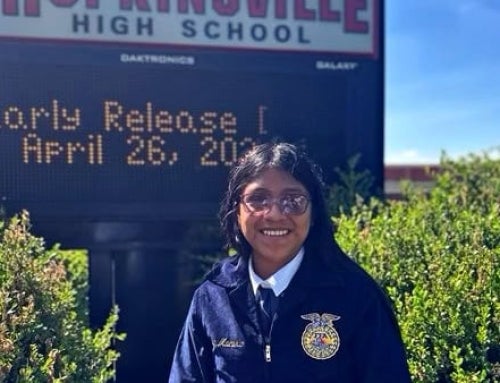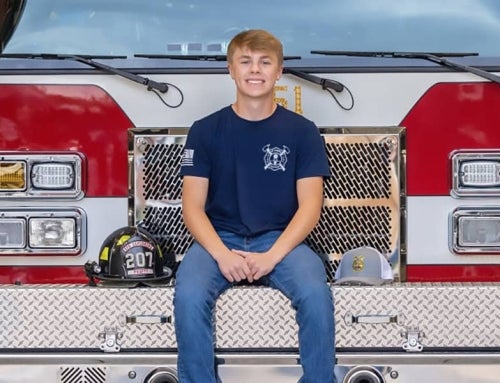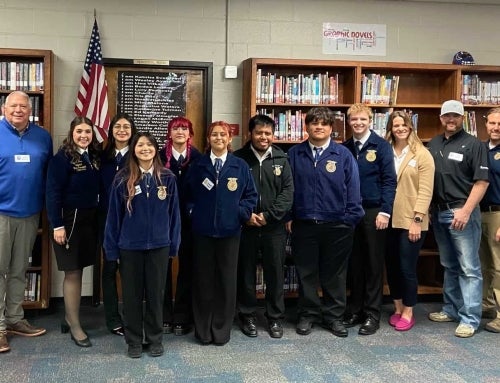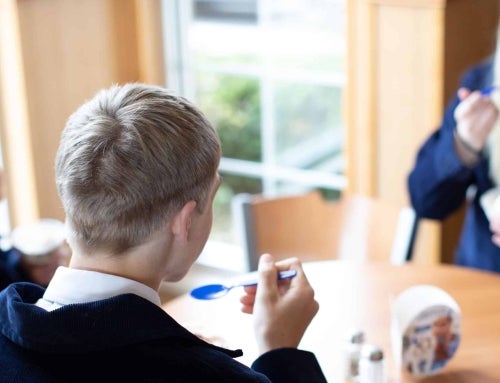It is said that the best predictor of the future is the past. Unfortunately, weather and climate disasters have occurred all along, and they show no signs of stopping. In fact, the U.S. experienced a historic year of such disasters in 2017. In total, the U.S. was impacted by 16 separate billion-dollar disaster events, according to Climate.gov, including three tropical cyclones, eight severe storms, two inland floods, a crop freeze, drought and wildfire.
When disaster strikes, though, it’s not uncommon to find FFA members across the country at the center of relief efforts in their local communities and beyond. They often take the skills and lessons they’ve learned through the organization and use these talents to serve those in need.
In addition to helping others, many FFA members change their lives and perspectives through these unforgettable experiences, as well. They discover the value of community service and learn just how supportive the U.S. agriculture community is.
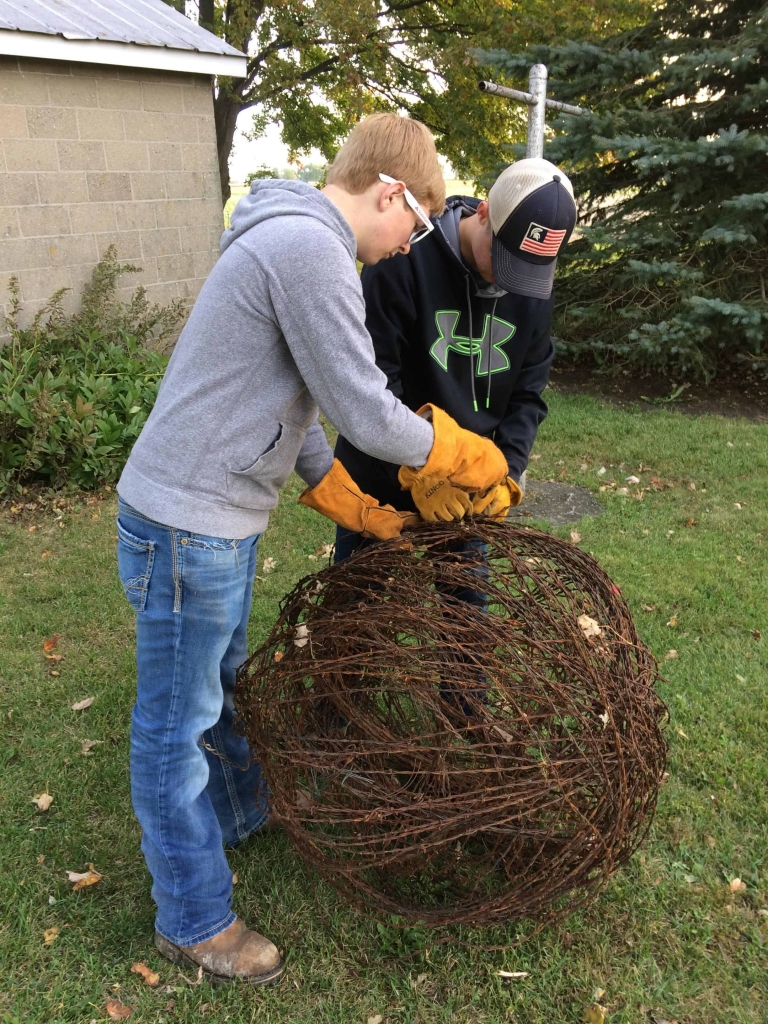
Beauty From Ashes
After devastating wildfires swept through states including Texas, Oklahoma, Kansas and Colorado the week of March 5, 2017, the Sanilac FFA from the Sanilac Career Center in Peck, Mich., sprang into action.
Members were inspired by an initial convoy that headed to farms on the High Plains with supplies on March 17, led by a group of volunteers now known as Ag Community Relief, a Michigan-based nonprofit organization that helps farmers and ranchers devastated by wildfires, drought and floods across the U.S. On April 7, during spring break, a team of Sanilac FFA and Sanilac County 4-H members followed suit, renting a bus and driving to Kansas to help ranchers tear down fences and posts that had been damaged or destroyed in the fires.
“The ranchers were so grateful for these kids, who volunteered their time, because it gave them hope and showed them that they were not forgotten,” says Christy Gordon, who serves as secretary of the Ag Community Relief organization’s board. “They were reminded that people truly care. There were some great relationships formed during this difficult time, and it was a life-changing experience for many of those young people.”
After returning home on April 10, Sanilac FFA members rolled the burned barbed wire into balls to create decorative tumbleweeds and other crafts, which they sold to support Ag Community Relief ’s efforts and to purchase new rolls of barbed wire for the ranchers impacted by the fires. To date, hundreds of rolls have been donated, and more will be on the way soon.
“The students were excited about the tumbleweed project, and they made each creation very personal,” says Robert Sollman, Sanilac FFA advisor. “Each tumbleweed included a tag that identified the fire and ranch the barbed wire came from, so the people buying them could feel a connection to those affected by the devastation. The project is ongoing; we still have barbed wire left over, and the students plan to create new tumbleweeds and decorations so they can continue raising funds for those in need.”
As a way of thanking young volunteers for their selflessness, as well as encouraging them to continue donating their time and participating in community service, Ag Community Relief has established a scholarship fund for FFA and 4-H students, clubs and chapters in Michigan and other states.
“We want to keep this wonderful relationship going between FFA, 4-H and Ag Community Relief, and we want to support these kids as much as we can,” Gordon says.

Animal Instincts
When wildfires broke out in Napa County, Calif., on the night of Oct. 8, 2017, Napa FFA advisor Emmalee Casillas made the decision to open up Vintage Farm at Vintage High School (VHS), where her FFA members regularly took care of animals, to livestock and pets in the area that were in danger. She quickly posted on Facebook to let her followers know that their animals were welcome at the farm, and she almost immediately began getting text messages from FFA members asking if they could help.
“Seven kids came out that very first night,” Casillas says. “We scrambled to empty out all of our pens at the farm and filled as many buckets with water as we could. Then we got a call to go help someone, which was never the plan. We thought people would bring their livestock to us. That’s when we started traveling around with our truck and trailer to rescue animals.”
For the next 70 hours, Casillas and that seven-member FFA crew worked around the clock. Stephen Cole, a 16-year-old sophomore at VHS and a member of the Napa FFA, was part of that group. His primary jobs were preparing the pens to accommodate the animals and treating them when they arrived.
“I stayed at the farm and handled the vet tech tasks,” Cole says. “I knew the animals were going to be coming in with respiratory issues from smoke inhalation, and I was prepared with medication. Thanks to my teachers, I knew what to do and what it would take to make sure every animal was taken care of.”
Vintage Farm housed more than 200 animals, including horses, cows, alpacas and llamas, and Cole continued to help care for them in the days following the fires. He remembers working alongside the head veterinarian from the University of California, Davis, which, he says, was an unforgettable experience that reinforced his dream of becoming a large animal veterinarian in the future.
“We took care of the animals like they were our own,” Cole says. “It was challenging, but we all came together as a chapter and a community and got the job done. It was definitely a life-changing experience, and it’s something that will stick with me forever.”
The experience changed Casillas’ life, too, and she says she was impressed with how her students rose to the occasion and worked together as a team. She says more than 40 Napa FFA members helped care for animals during a two-week period, even developing a system to ensure each animal was fed, hydrated and accounted for.
“These students could have sat at home and waited it out, but they chose to show up and help,” Casillas says. “Napa FFA is part of a four- year animal science pathway at VHS, and I’m proud to say that our members took what they learned in the classroom and applied it beautifully.
Their leadership skills were put to the test, as well. They truly amazed me.”
A Way of Life
Service to others is fundamental for FFA members nationwide. From wildfire recovery to hurricane cleanup, several other chapters, including alumni and supporters, have taken part in natural disaster relief efforts. Here’s a roundup of some of their stories.
Members of the Stover FFA in Stover, Mo., acquired supplies for those affected by the 2017 wildfires in Oklahoma, Texas and Kansas. According to Bryan Rumans, the chapter’s advisor, the effort was led by chapter President Caysi Knierim and Vice President Blayne Murry. Members collected 180 bales of hay, 13,000 pounds of feed, 30 pallets off bottled water, $850 in fencing supplies and $1,600 in cash donations, which were used to purchase milk replacer and fencing supplies and to cover transportation costs.
Following the devastation caused by Hurricane Harvey in August 2017, the Illinois-based Mount Vernon FFA and Mount Vernon FFA Alumni and Supporters raised and donated $$22,212 to the Texas Agricultural Education Disaster Relief Fund, which helps FFA Chapters and agricultural education programs rebuild after natural disasters
Culver’s of Kingwood, Culver’s of Atascocita and another Culver’s restaurant in Texas donated $1,000 to help the Kingwood FFA renovate an agricultural education barn and replace tools and equipment damaged during Hurricane Harvey.
After wildfires swept through Lipscomb County, Texas, and burned more than 300,000 acres of ranchland in 2017, a group of Raymond Central Alumni and Supporters from Nebraska collected donations from other alumni and supporters, local business and chapters, and drove more than 1,000 miles to deliver the supplies to the community’s ranchers. Raymond Central FFA President Miranda Hornung also helped by creating and distributing fliers about the donations and collecting donations from area FFA chapters.
Following the 2017 Kansas wildfires, 15 students and advisors from the Chaparral FFA helped an Ashland rancher pick up the remains of a destroyed barn and helped tear down and repair burned fence lines.
Partner Project
In 2016, Red Brand created an FFA service project challenge called “The Red Brand Wildfire Relief Program.” The project helps with wildfire recovery efforts by leveraging the support of FFA chapters from around the country. Groups are encouraged to seek out neighbors who need help with fence tear-out or rebuilding. In return, Red Brand will donate up to $500 to the FFA chapters that coordinate the efforts. To learn more, visit redbrand.com/wildfire.aspx.



